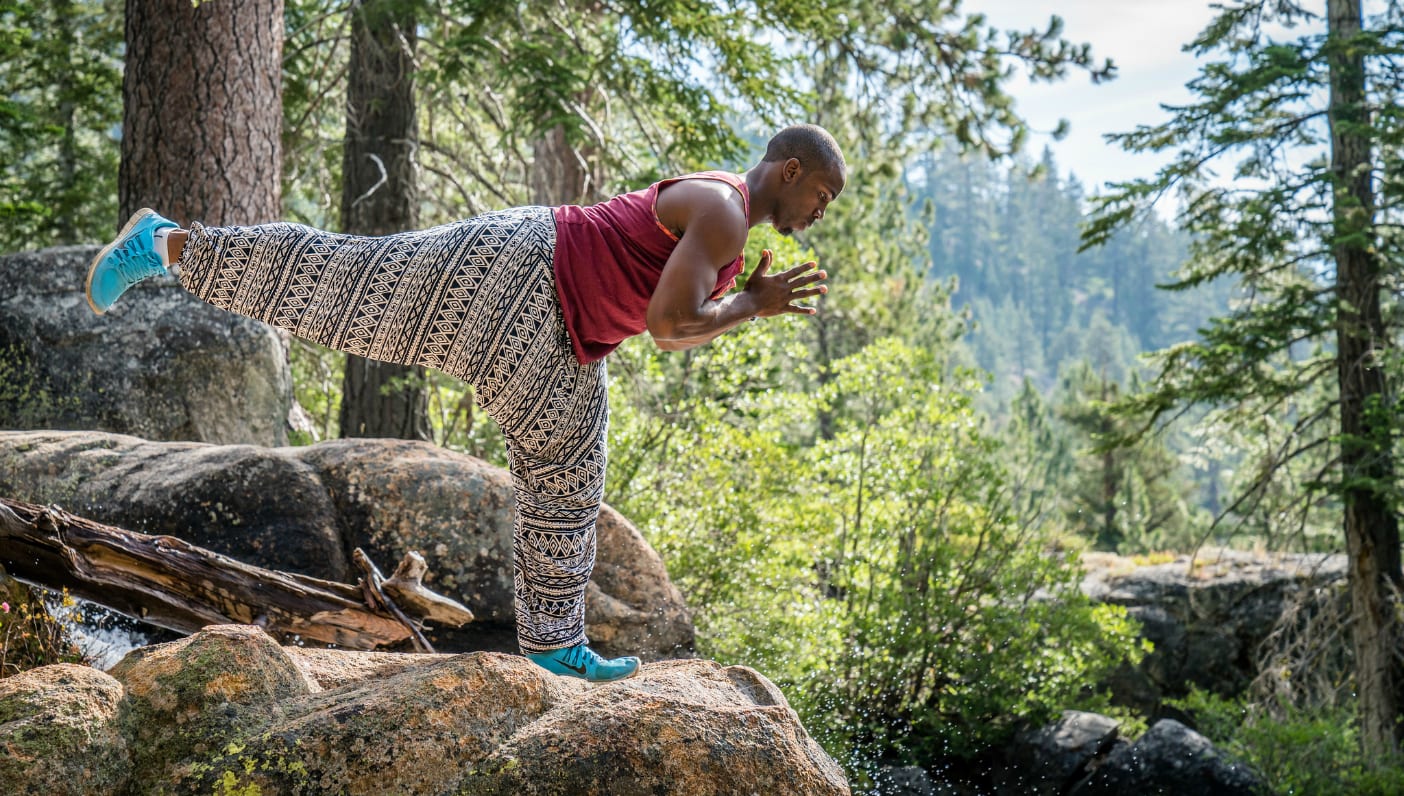
When yoga studios began to pop up around the US, Dr. Gail Parker says she thought she “had died and gone to heaven.” A student of a protégé of Swami Yogananda, Gail had been studying and practicing yoga chiefly at home for many years and being in community was an opportunity for greater practice. But, like in many studios today, she found herself often the only person of color in class. She also experienced a triggering of race-based trauma during Savasana.
“The teacher would touch our heads and massage our necks during Savasana, and I would have an instant tension reflex and recall all the times white females had made racist remarks about my hair. I would freeze,” says Gail. “Even though I knew the teacher’s touches were loving or certainly neutral, and that she had no idea of this history, it was painful, and not something I felt comfortable broaching. Yoga taught me to just rest in the observation of that experience, but that experience also taught me that as yoga teachers we need to be more sensitive to those in the room—to be more sensitive to race-based stress.”
There is a growing awareness, backed by studies, that show people experience emotional and physical distress as a result of racial prejudice. Yoga, with its ability to relax the nervous system and integrate and process experiences, is a perfect tool among the “arsenal of health care strategies for people of color and other racially marginalized groups,” says Gail, but it means bringing greater awareness to yoga teachers of how to ensure their classes are serving all individuals.
“My concern is that if we are unaware that race-based stress exists, then yoga classes may run the risk of re-traumatizing people of color and keep them from deriving the maximum benefits of the practice,” she says.
Increasing Awareness
„For yoga teachers—the majority of which are white in the US—being sensitive to racial difference, and being able to talk about it is crucial,” says Gail. The tendency to say ‘we’re all the same’ in the name of being equanimous isn’t helpful. The goal of yoga may be to recognize the unity of all things, but that does not mean ignoring differences, she says.
“We think that to notice differences is to be divisive, but this is not the case,“ says Gail. „We are unique and have our own contributions to make, and can better support one another if we welcome in those differences—and this begins with acknowledging that those differences exist, and not denying them.”
Within the yoga studio, a lack of acknowledgment can even exacerbate trauma or cause physical injury. Says Gail: “For example, many African Americans have been taught that to succeed in your daily life you have to give 200 percent, so if a yoga teacher is instructing the class to try harder, then they have to know that African American students may then try too hard. It could potentially cause them to overwork their bodies and increase the risk of injury.”
Encouraging students to “find their edge”—an ubiquitous phrase in yoga classes—may not be appropriate for those who have experienced racial trauma. “For many people of color, daily life is taking us to our edge of discomfort,” says Gail. “Yoga, therefore, is a place to come to feel safe. But if yoga teachers aren’t having conversations about racial differences, and if they aren’t familiar with different cultures, then they won’t know what could potentially trigger trauma, and they won’t be able to create a safe space.”
While it is not appropriate to ask students of color to share how race-based stress might be best addressed in class, Gail suggests yoga teachers prioritize becoming familiar with cultural and racial sensitives beyond their own. “People bring their life experiences and challenges into the yoga room, whatever those may be,“ she says. „We cannot assume everyone in the room is having the same experience. Our job as a yoga teacher is to support the student to come safely into the body, mind, heart and spirit.”
How it Impacts Everyone
It’s important to remember that racial prejudice impacts each one of us says Gail, and therefore is relevant to each of us regardless of our race. Racism creates tension that creates stress for everyone. “It’s not an isolated issue for people of color. When one is suffering we all suffer,” she says.
Gail points to some of the more contemplative elements of yoga that can help us all gain greater insight into how racism is impacting our lives, and how we can navigate its complexity. The yamas and niyamas are one example.
“If we are practicing ahimsa (non-harming) we can get curious about how our ignorance may be harming others. What can I do to ensure all feel safe in my company?” she says.
Svadhyaya, self-study, can also encourage us to explore our notion of identity, individuality and culture. We can ask the question: How am I being impacted by the culture I live in? Is it cutting me off from understanding other cultures? Is it one in which is considered ‘less than’ other cultures and how is this impacting me and my beliefs about myself?
And tapas (dedication) can also provide us with a chance for reflection and action. Says Gail: “Tapas is being willing to step into the fire, to get uncomfortable in order to transform. That could mean broaching conversations about race and trauma. It could be asking oneself, might I be the one creating trauma? What is my role in the system of racism? And for people of color, tapas might mean noticing their vulnerability and feeling safe within that.”
In this way, yoga allows us to become more aware of our conditioning and thoughts and beliefs, and can also allow us to see where we might be contributing to a consciousness of racism. Its practice of openness can allow us to navigate uncomfortable feelings of shame, guilt, blame or sadness that arise if we uncover that we ourselves have assumptions or prejudices based on race. Yoga, in its practice of being an open and safe container, also decreases the tendency to avoid, deny or defend anything we do uncover.
“The framework and principles of yoga are well-suited for dealing with the depth and complexity of race-based issues and race-related stress,” says Gail, who is aiming to increase the conversation around the topics. “Through the practice of yoga we develop courage and awareness. We can we use that to work through our own stresses and tensions and traumas, and we must also make sure we ensure yoga allows everyone to do the same.”
—

Helen Avery is a senior writer at Wanderlust. She is a journalist, writer, yoga teacher, minister-in-training, and full-time dog walker of Millie.